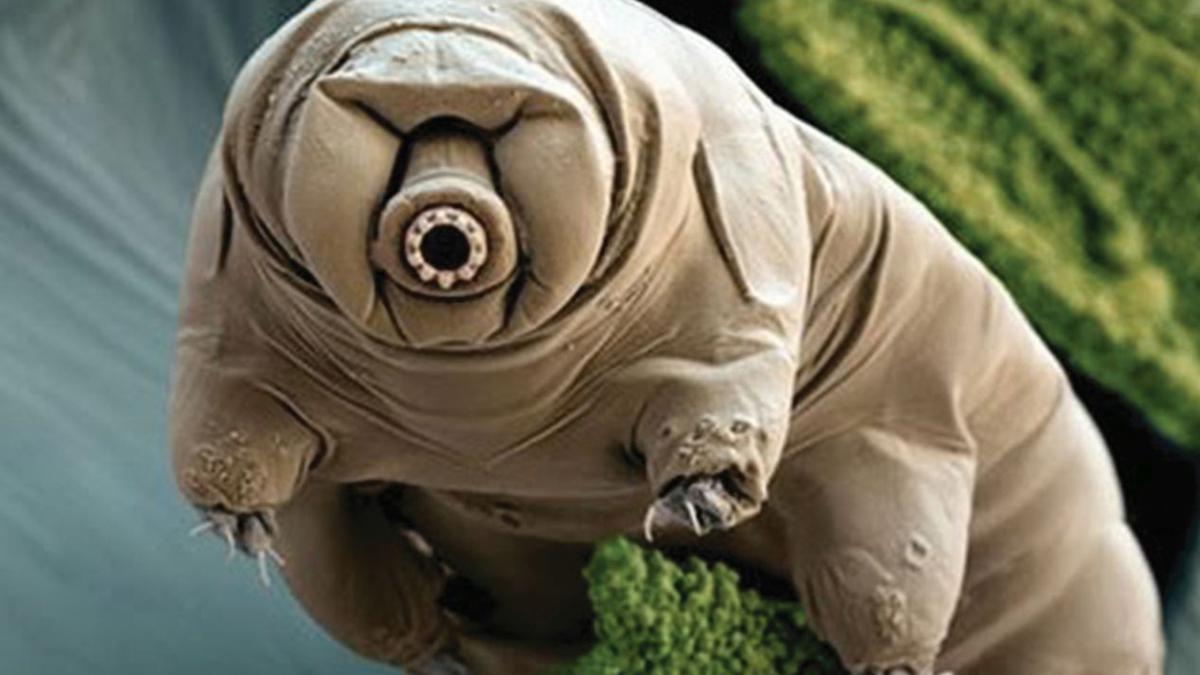Tardigrades are one of the most flexible and mysterious life forms on Earth. These organisms, also called water bears and moss warthogs, are microscopic creatures with eight legs and no backbone.
They awe with their remarkable ability to survive in extreme environments, including areas so radioactive that they would easily be fatal to humans. They can also survive hunger, lack of air and water, and subzero temperatures.
Old survivor
These magnificent creatures belong to a phylum of their own (Tardigrada), and live in some of the most extreme ecosystems on the planet, from the frigid expanses of the Arctic and deep-sea floors to scorching deserts and even the vacuum of space. Researchers have identified more than 1,300 species of tardigrades so far; Each species is uniquely adapted to conditions that would be fatal to most other life forms.
Evolutionarily speaking, tardigrades are an ancient species. The oldest known fossils date back to about 90 million years ago, in the Cretaceous period. Molecular dating suggests that they at least arose 600 million years since.
When faced with hostile environments, tardigrades can enter a state called cryptobiosis, which causes almost all of their biological processes to pause and remain in a state of suspended animation. This strange condition allows them to withstand extreme drought, extreme radiation, and freezing. The ability of tardigrades to survive radiation is due to specialized mechanisms that can protect their genetic material from damage. In fact, they not only survive dangerous radiation, but are able to recover and resume their normal lives.
Lessons from tardigrades
Their tardigrade properties have made them the subject of intense scientific study. Researchers hope that revealing the secrets of specialized survival mechanisms will pave the way for advances in human medicine, space exploration, and beyond.
Research has indicated that there are many mechanisms that help tardigrades, and insights into them are expected to have significant biomedical and industrial value. For example, researchers recently discussed the role of a particular class of proteins: these proteins have flexible bodies and no intrinsic structure. Hence they are called intrinsically disordered proteins.
One subset of these are heat-soluble and abundantly secreted proteins. Recently, researchers have tried to create these proteins in other microbes by cloning the essential genes and transferring them to the latter. Their work suggests that such a method is able to enhance the ability of microbes to tolerate desiccation (complete drying). This work was published in Nature Communications Biology in May.
Another sheet Published last year In the same journal she explored molecules called small heat shock proteins and, in a similar way, demonstrated that they could enhance the ability of microbes to survive hot conditions as well as prevent proteins from clumping when they dry.

Survival begins in the cell
Recently, researchers from China announced a new species of tardigrade, Hypsibius henanensis. Their findings, It was reported on October 25 in sciencesThis included genome assembly at the chromosome level that revealed many details about the genes that give tardigrades the ability to withstand radiation. They exposed tardigrades to gamma rays at doses about 1,000 times higher than the lethal limit for humans, and tracked the genes that were expressed using genomic tools.
The researchers found that thousands of genes were upregulated when tardigrades were exposed to intense radiation. Further analysis suggests that radiation resistance is likely to be modified by genes that can be acquired by horizontal transfer, i.e. from other species in their environment. The researchers also discovered some tardigrade-specific genes, as well as genes similar, but not identical, to those found in other organisms.
In fact, horizontal gene transfer contributed more than 0.5% of the tardigrade genes, a significant fraction that indicates its importance in the survival and evolution of tardigrades. the Doda1 The gene is of particular interest: tardigrades need it to make betalain, a type of antioxidant pigment that can protect tardigrade cells from radiation damage. Creatures may have acquired it from bacterial species.
There is a second class of genes involved in radiation resistance that is unique to tardigrades themselves. One of them is TRID1which plays a role in repairing damaged DNA by phase separation. Another is NDUFB8associated with mitochondrial function. Researchers have identified them as being crucial to a species' ability to survive extreme conditions by (most likely) helping to maintain cell stability and maintain energy production even under high radiation pressure. Effectively, tardigrades' survival advantages begin at the cellular level.
Applications on the horizon
The biology of tardigrades may seem strange at this time, and the research exploring them may seem esoteric. But much of biology makes sense in light of evolution (to quote Theodosius Dobzhansky), and solving the mysteries of tardigrades may quickly translate into breakthroughs in real-world challenges with far-reaching implications. Remember, scientists developed CRISPR-Cas9 based on a unique mechanism in bacteria to repair their DNA.

Consider protein stability in tardigrades. We often use biological therapies such as protein vaccines, antibodies and enzymes to treat a variety of diseases. If we can find a way to stabilize the proteins involved in these techniques, we can increase their biological effectiveness as well.
As the field of cell therapies continues to grow, researchers are looking for technologies to protect these therapeutic products in the harsh conditions they may encounter during storage, transportation, and administration. Tardigrades have unique adaptations to resist or even avoid cellular damage, and researchers can learn from them to find ways to stabilize cells in research and biomedicine.
Taken together, tardigrades provide a unique blueprint for developing robust biological systems and materials. Their extraordinary survival mechanisms could inspire new strategies in medicine, biotechnology, and beyond, making important treatments and technologies more flexible, effective, and, crucially, more widely accessible.
Sridhar Sivasubu and Vinod Sakaria work at Karkinos Healthcare Pvt. Ltd. They are assistant professors at IIT Kanpur and DY Patil Medical College, Pune.
Published – 06 November 2024 at 5:30 AM IST

“Extreme travel lover. Bacon fanatic. Troublemaker. Introvert. Passionate music fanatic.”






More Stories
Turtle Nesting Sites and Climate Change: A Growing Concern
NightCafe Review and Tutorial (October 2024)
Report: The Menendez brothers may be released from prison before Christmas